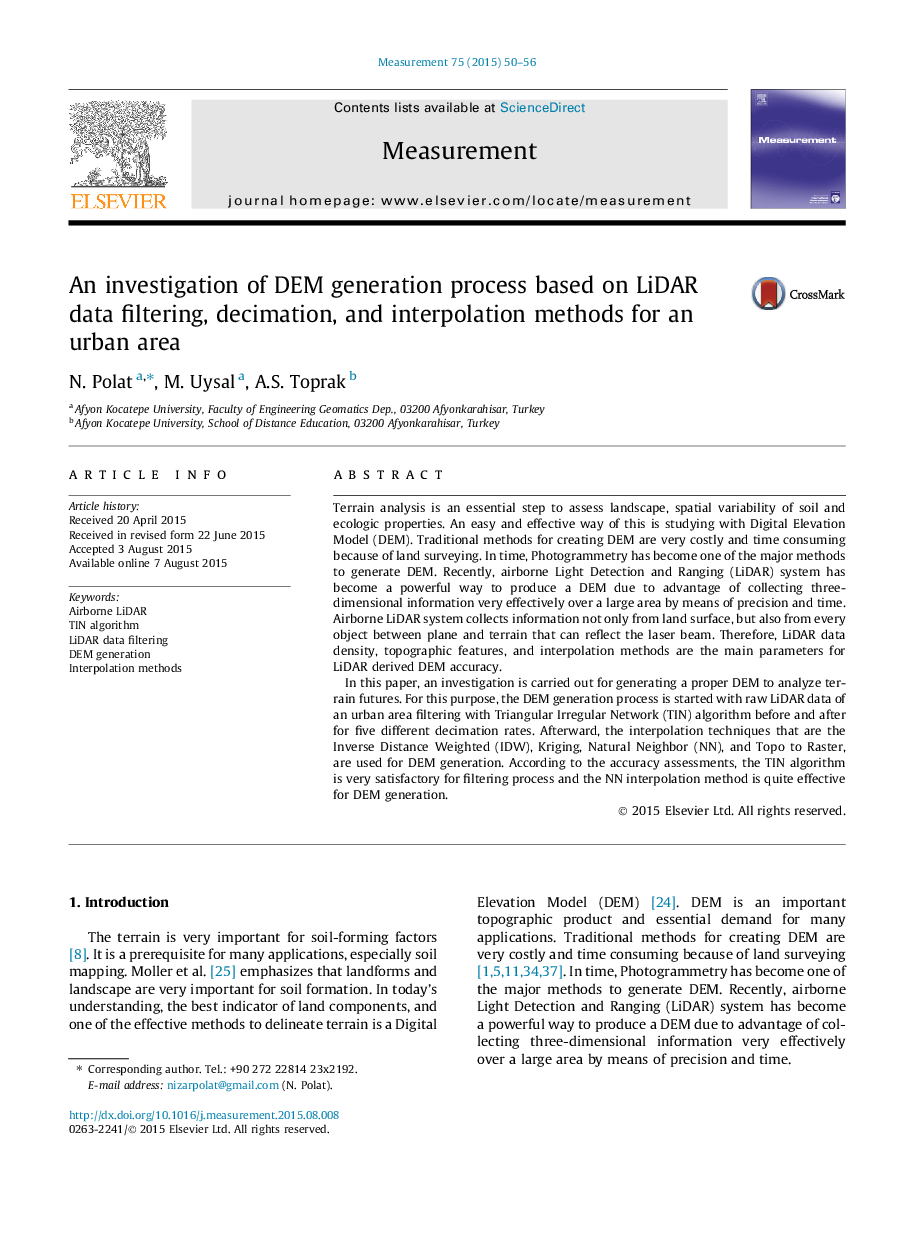| کد مقاله | کد نشریه | سال انتشار | مقاله انگلیسی | نسخه تمام متن |
|---|---|---|---|---|
| 730932 | 1461512 | 2015 | 7 صفحه PDF | دانلود رایگان |

• Raw LiDAR data is filtered and decimated to produce DEM.
• Different interpolation methods are used DEM generation.
• The decimation rate and interpolation method are two of the most important components for DEM accuracy.
• Un-decimated LiDAR data may not always be the optimal alternative input for the soil–landform modeling.
Terrain analysis is an essential step to assess landscape, spatial variability of soil and ecologic properties. An easy and effective way of this is studying with Digital Elevation Model (DEM). Traditional methods for creating DEM are very costly and time consuming because of land surveying. In time, Photogrammetry has become one of the major methods to generate DEM. Recently, airborne Light Detection and Ranging (LiDAR) system has become a powerful way to produce a DEM due to advantage of collecting three-dimensional information very effectively over a large area by means of precision and time. Airborne LiDAR system collects information not only from land surface, but also from every object between plane and terrain that can reflect the laser beam. Therefore, LiDAR data density, topographic features, and interpolation methods are the main parameters for LiDAR derived DEM accuracy.In this paper, an investigation is carried out for generating a proper DEM to analyze terrain futures. For this purpose, the DEM generation process is started with raw LiDAR data of an urban area filtering with Triangular Irregular Network (TIN) algorithm before and after for five different decimation rates. Afterward, the interpolation techniques that are the Inverse Distance Weighted (IDW), Kriging, Natural Neighbor (NN), and Topo to Raster, are used for DEM generation. According to the accuracy assessments, the TIN algorithm is very satisfactory for filtering process and the NN interpolation method is quite effective for DEM generation.
Journal: Measurement - Volume 75, November 2015, Pages 50–56